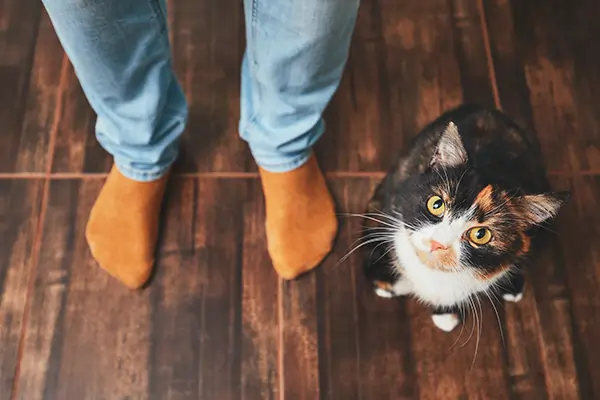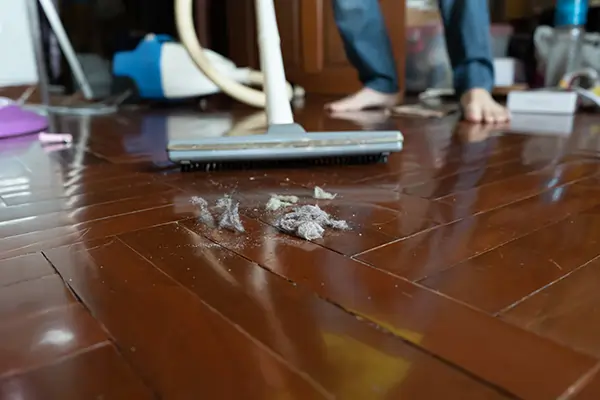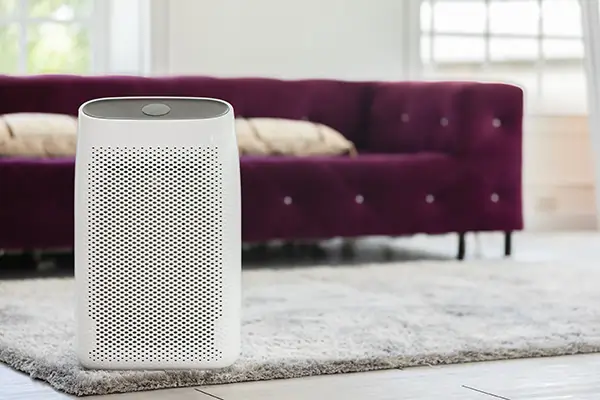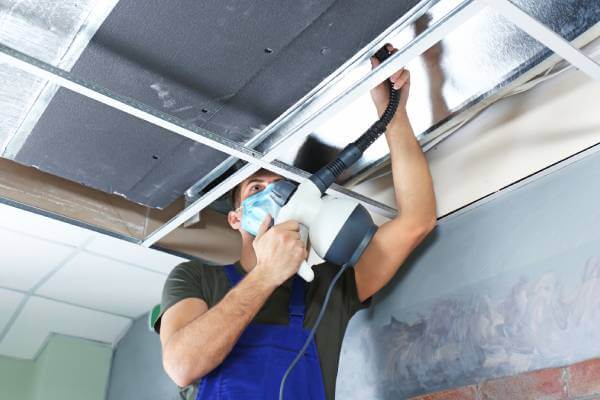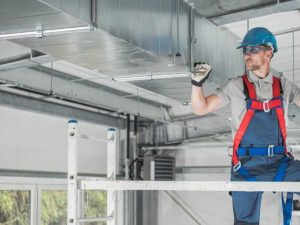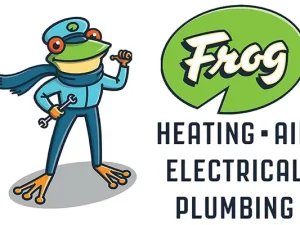We all love our pets, but if you, a friend or family member is allergic to dogs, cats, or birds, then you know how aggravating allergies can be. Itchy, watery eyes, sneezing, coughing, headaches, and sinus problems can really hinder your ability to enjoy life. These are the leading causes of pet allergies:
Pet Dander
Pets carry dander and can collect dust on their fur and coats. Dander is made up of skin flakes that your pet sheds in addition to their hair. If you have a dander allergy, it means that you are allergic to the proteins secreted by oil glands under your pet’s skin. Shed skin, covered in these proteins, is a part of any dander shed by your pet.
You may sometimes notice these skin flakes floating through the air or accumulating in certain corners of your home. However, not all dander is visible to the human eye. Some dander particles are microscopic and can get trapped in carpets, bedding and furniture. If disturbed, these allergens can be released into the air and suspend there for a long time.
Pet Hair
Pet hair itself rarely causes an allergic reaction, but it helps to trap particles of dander, so pet hair can still be a problem if it collects on the floor, your furniture or gets into the air. Pet hair can collect other animal products such as pet saliva or urine, which contain allergy-producing proteins as well.
Some breeders tout certain dog and cat breeds as “hypoallergenic” because of their lack of fur or the fact that they do not shed. While it is true that a non-shedding or low-shedding animal will mean less airborne pet hair, all cats and dogs will still shed some dander. However, dogs with curly fur may be more allergy-friendly than straight-haired dogs because their coat is better able to trap saliva and dander instead of releasing it into the air.
Dust Bunnies
Dust bunnies can often be home to accumulated pet dander, hair and saliva, in addition to other common household allergens such as pollen and mold spores. Additionally, dust mites feed on pet dander, multiply and produce more allergy substances that can get into the air – causing further issues for allergy sufferers.
Pet Saliva and Accidents
Pet saliva is another common animal-related allergen. When your pets lick themselves, the proteins in their saliva can stick to their fur, just like dander, and cause allergic reactions when you come into contact with it. Pet urine also contains allergy-causing proteins, meaning that a pet accident can be a potential source of allergens in your home. If you do not wash your pet regularly, the proteins in their urine can sometimes accumulate in their fur as well.
Do air purifiers help with pet allergies?
Depending on the technology, an air purifier that uses a filter to remove particles can have a significant impact on the amount of pet allergens. These tiny particles can suspend in the air for long periods of time, even if your pet is not present in the home. Removing as much of them as possible may help with allergy symptoms.
The important thing to know about pet allergens is that they are carried on very small particles, and once floating in the air, they can stay there for hours. These particles get into your body primarily by being inhaled. Even though dander can be a microscopic, it is still large enough to get picked up by certain kinds of filters and removed from the air by an air purifier.
There are different kinds of air-filtration systems and Frog Air can help you figure out what kind is best for your unique situation.
Along with an effective air-filtration system, there are ways to reduce pet-related allergens:
Reduce Pet Dander Inside the Home.
Pet dander is released from your pet’s skin all the time. It peaks when your pet is active, shakes, or gets some attention from its owners (yes, when you pet your dog you are releasing pet dander into the air). Brushing your pet’s fur releases a lot of dander, so it should always be done outside. This can actually help reduce pet dander in the house temporarily, since brushing gets rid of so much of it outside instead of letting the dander get shaken off inside the house.
Regular Bathing There is some evidence that regular bathing (once a week) reduces the amount of dander a pet gives off, especially dogs. There are special shampoos intended to reduce dander, so use those whenever possible. Keeping your pet healthy by feeding a veterinarian-recommended diet and providing plenty of water can help, since healthy skin and fur gives off less dander than dried out, flaky skin.
Limit Area of Activity
One of the biggest problems with pet dander is that it gets trapped in carpets, bedding, sofas, and clothes. If just one person in your household has a pet allergy, restrict the pet so that it cannot get to that person’s bedroom. This will cut down on the amount of dander the allergic person is exposed to while sleeping, which may help with nighttime allergies. It can help to keep pets off of the furniture. You can also buy special pillowcases and mattress covers designed to prevent dust, pet dander, and other particles from getting trapped inside the pillow or mattress, which can help you get a good, allergy-free night of sleep.
Regular Cleaning
Another important way to reduce the amount of pet dander in your house is frequent cleaning. Dust with a wet rag and vacuum carpets, rugs, and furniture with a HEPA vacuum cleaner. Doing this frequently will cut down on pet dander almost as much as an air filter will. In fact, if possible, get rid of carpets — bare floors do not trap dander and dust as well. You can use throw rugs instead, which can be washed in hot water, removing all the dander and dust mites.
HVAC maintenance
Maintaining the filter in your home’s heating and cooling system can aid in the removal of pet dander from the air (and keep your system free from particle build up). For more effective filtration, regularly replace the filter element over the return vents of your HVAC system. Contact us if you need help with your HVAC system.
There are ways that you can protect yourself from allergic reactions while still enjoying the companionship of a furry friend. Along with installing an air-filtration system, it may take a little extra cleaning and maintenance, but for many families, the effort is well worth the result.

